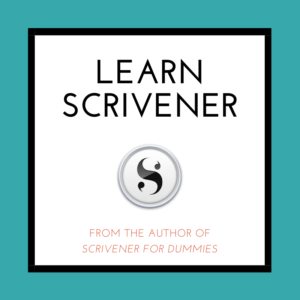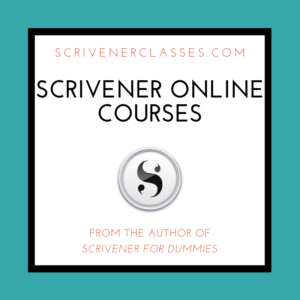Do you often find yourself struggling to complete your writing tasks? Have you ever experienced the frustration of staring at a blank page for hours? The good news is that writing doesn’t have to be an arduous process. By implementing a few straightforward strategies, you can effectively push through your writing and accomplish your tasks promptly and efficiently. The relief of overcoming these challenges is within your reach.
“Writing is an art that anyone can master with the right tools and practice. Through my own experience, I’ve discovered a few powerful tricks for boosting my writing skills. In this post, I’ve rounded up my top three writing tips to supercharge your productivity and elevate the quality of your work.” Let’s dive in and empower you to take control of your writing journey.

Write a Solid Introduction
An introduction is your first impression and will significantly impact whether or not the reader continues reading your blog post. Crafting a compelling introduction is crucial, setting the tone for the entire piece. Here’s how to do it effectively:
Steps for Writing an Engaging Introduction
The text below outlines a method to structure your writing effectively:
1. Grab the Reader’s Attention: Begin with an engaging hook, such as an interesting fact, a thought-provoking question, or a compelling quote. This hook should entice the reader to continue reading by creating curiosity and interest.
2. Provide Relevant Background: Introduce the topic and its significance. Explain to the reader why the subject matters and how it relates to them. The context helps to set the stage for the information to follow and shows the reader the importance of the content. For instance, if you’re writing about the benefits of meditation, you could start with a personal story about how meditation transformed your life.
3. Present Your Main Argument: Your reader is a crucial part of the writing process. Clearly articulate the central point or purpose of your writing. The thesis statement should be brief and direct, offering a clear roadmap for the reader about the content they can expect. Your reader’s understanding and engagement are key to the success of your writing.
4. Preview Key Points: Provide an overview of the main ideas explored in your writing. Summarize the pivotal points, building anticipation and guiding the reader on what to expect, which keeps them engaged.

Types of Introductions
The following types of introductions that you can use in your writing:
– Narrative: This type of introduction involves sharing a short story or anecdote related to your topic. Stories are naturally engaging and relatable. For instance, if you are writing about productivity, you might share a personal story about a time when you struggled to stay productive.
– Descriptive: A descriptive introduction involves using vivid language to paint a picture and draw the reader in. You can create a scene or evoke a particular emotion to captivate your audience. For example, describing a chaotic workspace can set the stage for a discussion on organizing your work environment.
– Explanatory: An explanatory introduction provides a straightforward explanation of what the reader will learn. This type of introduction is beneficial for more technical or educational posts. You can explain your problem and how your post will help solve it.
These different types of introductions cater to various writing styles. They can help you effectively engage your readers based on the nature of your content.
Example
Here’s an example of an introduction to this post:
“Do you struggle to get your writing done? Do you stare at a blank screen for hours, only to give up in frustration? Writing doesn’t have to be a painful process. With some simple tips, you can power through your writing and finish the job quickly and efficiently.”

Utilize Effective Writing Strategies
Exploring and applying various writing techniques can enhance your blog posts’ appeal, educational value, and captivating nature. Here are some key strategies to implement:
Simplify Your Writing
– Use clear and straightforward language that is easy for your audience to understand. Avoid complex words that may alienate or confuse readers. Your goal should be to communicate clearly and effectively.
– Be direct and get to the point without unnecessary wordiness. Readers prefer concise and straightforward writing that respects their time.
Adopt an Informal Tone and Style
– Write with a conversational tone to make your content more engaging. Utilize personal pronouns and speak directly to your audience.
To keep your content relatable, use everyday language and avoid unnecessary jargon. If you must use specialized terms, explain them clearly.
Write Concisely
When conveying your message, aim to be clear and efficient. It’s important to use as few words as possible without losing the clarity or meaning of your message. Ensure that each word serves a purpose. If a sentence does not add value, consider cutting it to enhance the overall impact of your communication.
Use Transition Words
Using transition words is an effective way to improve the flow of your writing by guiding the reader smoothly from one idea to the next. Transition words create a logical and coherent flow, making it easier for the reader to follow your thoughts. Some valid transition words include:
– Although
– As a result
– Consequently
– Even though
– For instance
– However
– Therefore
Example
Instead of writing, “The sky is blue, and this is because of the way light is scattered in the atmosphere,” you can write, “The sky appears blue due to light scattering.”
Go Beyond Words on a Page
“Writing goes beyond mere words on a page. It’s the art of vividly expressing your ideas and making a deep connection with your readers.” Here are additional tips to enhance your writing:
Practice Regularly
To become a better writer, it’s important to maintain consistency by dedicating regular time to practice and hone your skills. Setting aside specific writing sessions daily or weekly can help you develop and refine your abilities effectively.
Additionally, seeking feedback from peers or mentors can provide valuable insights into your writing. Constructive criticism from others can offer a fresh perspective on your work and help you identify areas for improvement. This external input can be instrumental in helping you grow and become a stronger writer.
Read Widely
When you’re initially drafting your piece, it’s crucial to avoid getting too fixated on achieving perfection. Rather than getting hung up on every minor detail, focus on effectively conveying your ideas. Your first draft serves as a canvas for capturing your initial thoughts and establishing the foundation for your work.
For inspiration, leverage your reading to stimulate fresh ideas and alternative approaches. Pay close attention to the strengths of the writing you admire and try to integrate those elements into your work.
Edit and Revise
When working on your first draft, it’s important to avoid getting caught up in perfection. Instead, focus on expressing your ideas without worrying too much about every detail. The first draft is all about capturing your initial thoughts and establishing the base for your piece.
After you’ve completed your first draft, it’s crucial to revise your work. During this stage, concentrate on enhancing the clarity, coherence, and overall quality of your writing. Look for opportunities to tighten your prose, clarify your arguments, and refine your writing style to make it more effective.
Example
After writing your first draft, take a break before revising. Fresh eyes can help you catch mistakes and see new ways to improve your writing.
Conclusion,
Writing productively and effectively is within your reach. By focusing on crafting a solid introduction, utilizing effective writing strategies, and going beyond just putting words on a page, you can significantly improve your writing skills. Remember, writing is a journey, and with consistent practice and the right techniques, you can make it a more enjoyable and productive process.
As a wordsmith seeking to enhance your writing prowess, you’ll find many remarkable writing tools and apps at your disposal. Let’s explore some of the best options:
- Scrivener: A beloved companion for authors, Scrivener offers a treasure trove of features. It helps you track plot threads, store character notes, structure your work, and—most importantly—get serious writing done. While it’s not free, the investment is worth it for serious writers.
- Ulysses: If distraction-free writing is your goal, Ulysses is your muse. Its minimalist interface allows you to focus solely on your words. Plus, it syncs seamlessly across devices, ensuring your creativity flows wherever you are.
- iA Writer: Ideal for online writing (think Medium or WordPress), iA Writer combines simplicity with elegance. Its clean design encourages a flow state, making it a favorite among bloggers and content creators.
- Plottr: For those who thrive on outlining, Plottr is a gem. It helps you map out your novel, organize scenes, and keep your plot threads in check. Whether you’re a pantser or a plotter, Plottr has your back.
- Reedsy Book Editor: If you’re working on a book, Reedsy’s online editor is a fantastic choice. It’s free, collaborative, and offers a straightforward interface for drafting and editing your masterpiece.
- yWriter: Scene-based writers rejoice! yWriter lets you organize your novel into scenes, track characters, and maintain a bird’s-eye view of your work. It’s a powerful tool for structuring your narrative.
Remember, the best writing app is the one that aligns with your unique needs and writing style. Whether you’re crafting screenplays, novels, or blog posts, these tools will be your trusty companions on your literary journey. Happy writing! 📝✨
Feel free to reach out if you have any questions or need further assistance. I’m here to help you succeed in your writing journey.
Kevin



